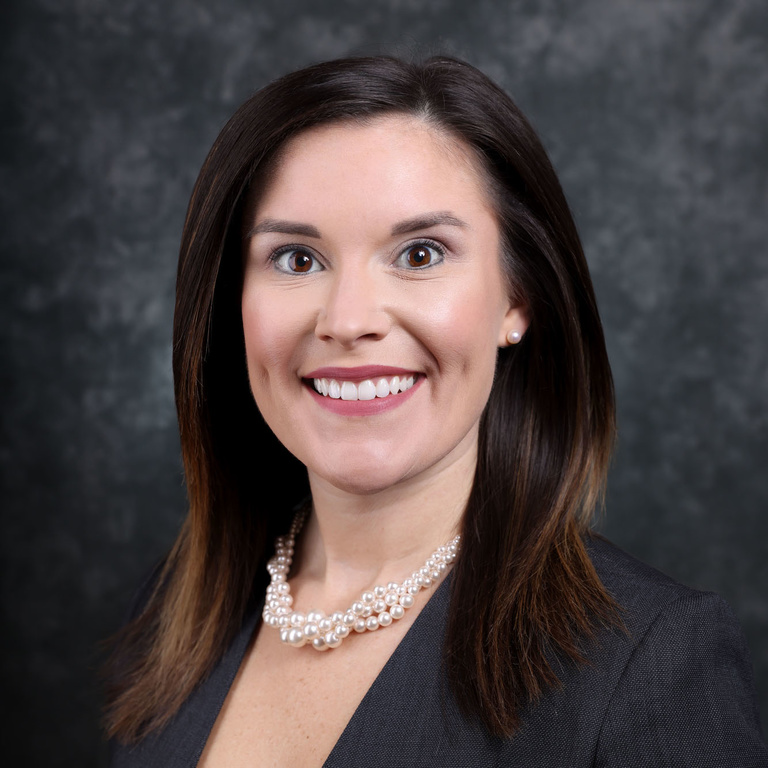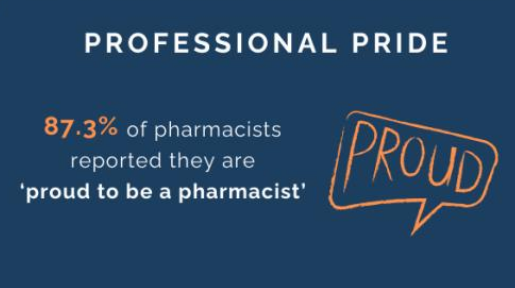
Research led by UW–Madison School of Pharmacy faculty and alumni reveals new insights on pharmacist well-being, pay, workforce diversity, and more
By Nicole Etter and Katie Gerhards
On a Wednesday morning, a pharmacist in a small town in New Hampshire counsels a patient on a new blood pressure medication. Meanwhile, another in Detroit is tracking population health trends for a managed care plan, and yet another, in San Antonio, is finishing a 12-hour shift at a hospital.
These are the many facets of pharmacy practice today, and they’re what the 2024 National Pharmacy Workforce Study set out to understand.
This is the seventh pharmacy workforce report since it was first launched by a team at the University of Wisconsin–Madison School of Pharmacy in 2000. From job satisfaction and pay to mental health, the responses of more than 5,100 pharmacists from across the country paint a picture of an expanding and evolving profession.
“For the first time, we’re collecting information related to the well-being and health of the pharmacist workforce, so that’s exciting,” says Dave Mott (BS ’88, MS ’92, PhD ’95), professor of social and administrative sciences at the UW–Madison School of Pharmacy. “There’s this overall concern among the health care workforce — nurses, physicians, pharmacists, and other allied health professionals — about improving their well-being and sustaining this really critical workforce. We wanted to know what’s happening in pharmacists’ work environments. What are their employment organizations doing to improve the work setting and the work experience for pharmacists, and then how is that impacting their health?”
“Knowing more about what the workforce is going through helps keep us informed so we’re coming up with workable policies.”
—Bill Doucette
The study was funded by the Pharmacy Workforce Center and conducted by the Midwest Pharmacy Workforce Consortium. The research team includes several people with School of Pharmacy ties, including Mott, Professor Emeritus David Kreling, Health Services Research in Pharmacy graduate student Sara Nadi, and alumni Bill Doucette (BS ’83, PhD ’93) and Jon Schommer (’85, MS ’89, PhD ’92).
“Knowing more about what the workforce is going through helps keep us informed so we’re coming up with workable policies,” says Doucette, a professor at the University of Iowa College of Pharmacy and longtime member of the research team. “It can help us identify areas of need, which is useful, and then on the other end, it can show us where there are success stories.”
This year’s report revealed several encouraging trends: strong pharmacist well-being and job satisfaction, increasing workforce diversity, and growing opportunities outside of traditional pharmacy settings.
Pharmacist well-being
This year’s report included several new questions about pharmacists’ physical and mental health to establish a benchmark that will be monitored in future surveys.

“The 2024 National Pharmacist Workforce Study is the first to use the NIOSH WellBQ to assess pharmacists’ well-being,” says Brianne Bakken, a member of the research team and associate professor at the University of Iowa College of Nursing. “As this new instrument is used in other research studies in the future, it will allow us to compare pharmacists with other health professions and other industries, which is really exciting.”
More than two-thirds of pharmacists rated their general health as “good” or “very good.” Pharmacists reported an average of 4.3 poor physical health days and 8.1 poor mental health days each month.
More than 86% of pharmacists reported feeling “satisfied” or “very satisfied” with their life. More than 69% reported feeling “somewhat satisfied” or “very satisfied” with their jobs, and more than three-quarters of respondents said they were proud to be a pharmacist.
“It’s a rewarding profession,” Doucette says. And pharmacists agree — about 90% of respondents said their work is meaningful and serves a greater purpose.
Full-time working pharmacists reported working an average of 42 hours a week in 2024, slightly down from 44 hours a week in 2014. At the same time, about 73% of practicing pharmacists in 2024 rated their workload as “high” or “excessively high,” up from 66% in 2014. Pharmacists in retail/chain settings, which are more likely to be understaffed, were more likely to report high workloads, while pharmacists in independent community pharmacies were the least likely to report high workloads.

“Chains are the tough spot right now, and they’re aware of that and they’re working on it,” notes Doucette, whose research focuses on community pharmacies. In his other projects, he’s seen an uptake in appointment technology to regulate pharmacist workflow and proposed changes to increase reimbursement rates — more money for provided services means more money to increase pharmacy staff.
Job satisfaction was higher for pharmacists working in ambulatory care settings and in other types of work environments, such as managed care or pharmaceutical companies.
“One of the tasks that our work group has in front of us is investigating why is it that these environments may be more positive,” Mott says. “What are the organizations doing to make the environment better for workers?”
Pharmacists are in demand
The number of pharmacists has fluctuated over the years. The nation faced a pharmacist shortage when the survey first launched in 2000, and then pharmacy schools expanded to meet the need. The number of working pharmacists peaked in 2019, and the profession’s unemployment rate reached around 5% that same year. But in 2024, that number fell to just 2.8%.
“We think that’s significant,” Mott says. “It might reflect that the workforce is going back into a shortage situation now.”

There has also been an increase in the percentage of licensed pharmacists who are working outside of pharmacy settings, though they still make up less than 10% of the profession.
“They’re in industry, startups, and a whole range of different settings,” Doucette says. “I think that’s positive because the general pharmacist degree prepares you for a lot of different things. You learn about medications, the pharmaceutical industry, pharmacy practice, and other components. And you can marry that with an interest in informatics or business or public health.”
Increasing pay
In 2024, a greater proportion of working pharmacists also reported pay raises in the previous year: 55% compared to 44% in 2019. That could also be another indication that pharmacists are in high demand, Mott says.
“When there’s a shortage, there’s more power in the hands of the pharmacist because they are a valued commodity,” he notes.

The average salary for full-time male pharmacists in 2024 was about $146,000 a year compared to $144,000 for women — about a 1.4% difference, compared with the 17.3% difference among all full-time, year-round workers reported by the U.S. Census Bureau.
“There’s been some analysis done that pharmacy is probably one of the most egalitarian professions out there where that gap in pay, especially when you control for other characteristics — like age, where people are working, and how much they’re working — is really not much of a pay gap at all,” Mott notes.
Pharmacists also report that they are able to pay off their student loans in about seven years.
“When we compare that to other health professions or other professions in general, that’s a pretty fast rate,” Mott says.
A younger and more diverse pharmacist workforce
More than half of the pharmacy workforce is 40 or younger.
“One of the significant advantages of having a younger workforce in the pharmacy sector is their adaptability to change. Armed with the latest knowledge from pharmacy school, particularly regarding direct patient care, they bring innovative perspectives, driving fresh ideas and problem-solving approaches that ultimately benefit patient outcomes,” says Nadi. “With many years ahead in their careers, younger pharmacists are investing in continuous professional development, which results in a strengthened workforce.”
The past several reports have shown a diversifying workforce. The percentage of nonwhite pharmacists grew from 16.5% in 2019 to 21% in 2024.

“It’s more reflective of the population for whom pharmacists are going to be providing care,” Mott notes.
The percentage of women pharmacists also continues to rise, from around 59% in 2014 to 68% in 2024. The proportion of women in pharmacy management positions has also grown from 55% in 2014 to nearly 68% in 2024.
“The leadership now reflects the whole profession, which is a good thing,” Doucette says.
Future studies
The research team continues to analyze free text responses from the 2024 survey, including pharmacists’ descriptions of their roles.
“As pharmacy practice has evolved and roles have expanded, we haven’t done a good job of keeping up with documenting what those roles are and how those roles have actually expanded and into what work activities,” Mott says. “Now we have all this really good data about these details.”
The team has published its findings on the American Association of Colleges of Pharmacy website and will continue to share new analyses through published articles and conferences. But in a new twist this year, the researchers also created an Instagram account under the name Pharmacy Workforce Nerds.
“We think it’s kind of a fun way to disseminate the results about our workforce in a very non-stuffy academic way,” Mott says. “We hope to share information that we think is impactful and will hopefully be useful for young pharmacists.”

